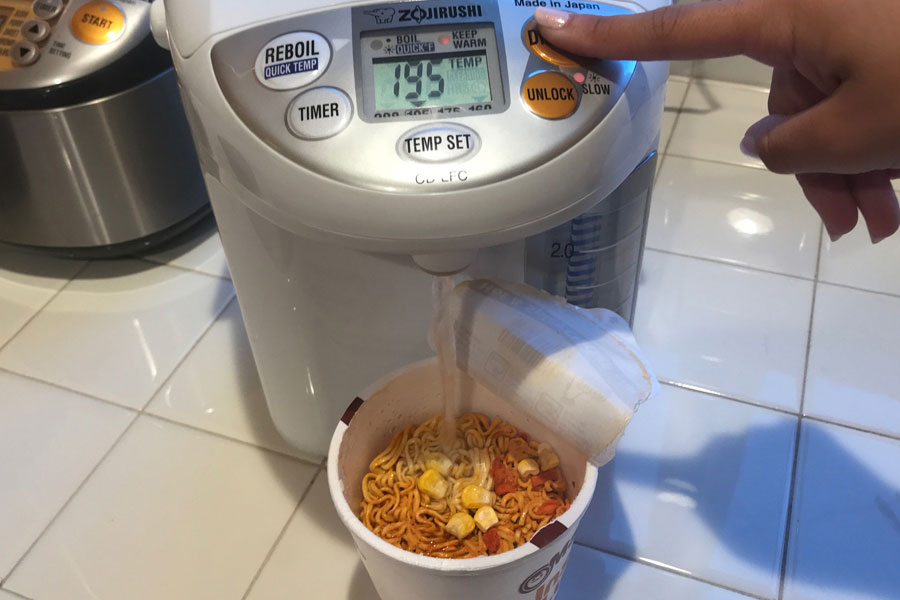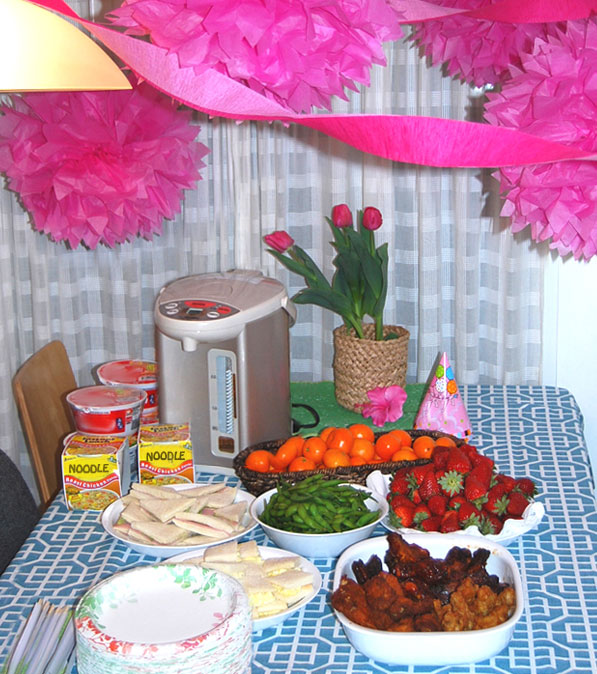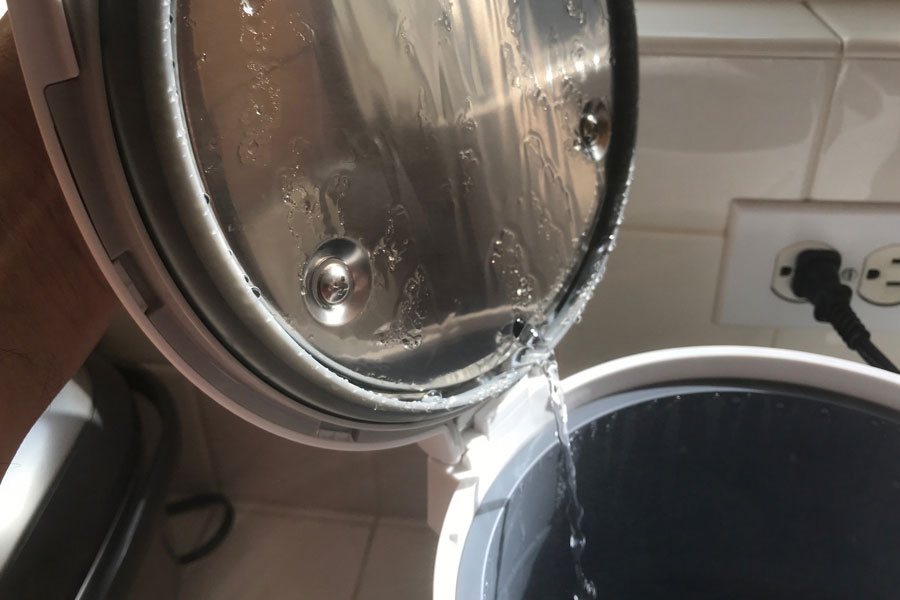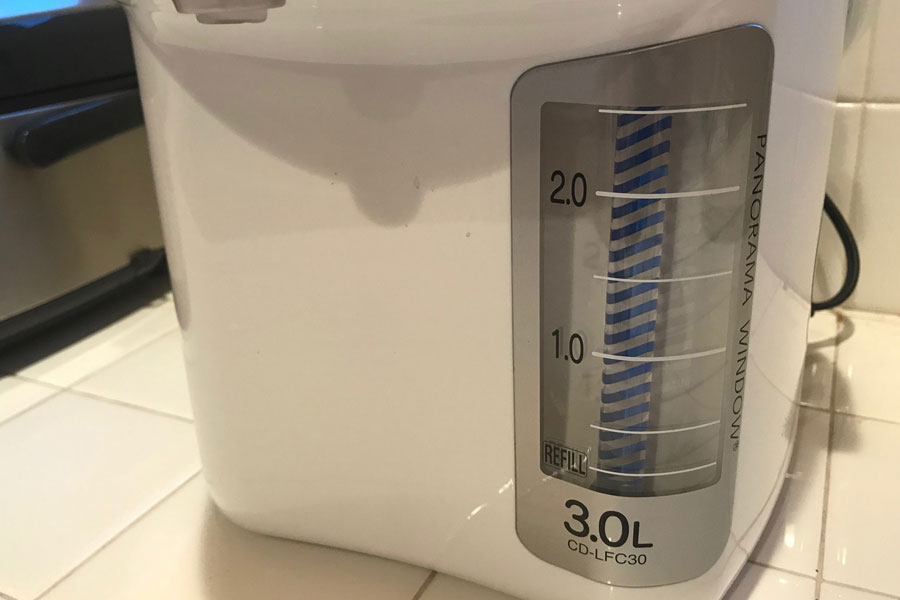We recently bought a new Zojirushi Water Boiler, after we were forced to retire our old one after so many years of faithful service. The inner pot started developing rust spots and the water started to smell funny, but I feel it lasted a long time, considering we kept it turned on 24/7—unplugging it only when we went out of town. We decided on the CD-LFC30, a cute, chunky looking model in sleek white. In our kitchen it breaks up the monotony of all the stainless steel appliances we have.
Ahhh! To have great tasting tea again! We’re heavy green tea drinkers at home, so my whole family uses hot water constantly. A water boiler that keeps hot water available any time makes total sense for us. But we use it for so many other things too, which is probably why ours is on all the time.
I have mine set at 195°F, which I think is OK for most uses. If I was doing a pour-over cup of coffee, I’d want it hotter so I’d be using boiled water from a kettle anyway. And if I got some really expensive tea, I might want to set it lower so I don’t scorch the tea leaves.
Besides tea, we use our water boiler for instant hot cocoa.
Also for instant oatmeal for a quick morning breakfast.
Instant miso soup! Have you tried these? They come with miso paste packets and dehydrated green onion, tofu and wakame seaweed. Just add hot water, and voila! Amazingly good miso soup!
And of course, the most popular emergency snack in the world, cup of noodles.
Speaking of cup of noodles, here’s our old water boiler performing like a champ during my daughter’s 13th birthday when we had a sleepover with a bunch of her friends. Mind you, this was self-service for the kids, which was perfectly safe when hot water is being dispensed out of a water boiler and not a hot kettle.
If all these uses weren’t enough to justify getting a water boiler, did you know plain hot water actually has health benefits too? Many people drink a cup of hot water first thing in the morning or right before bedtime as a holistic health remedy.
•It can help the body relax—makes sense; many people drink hot tea to calm nerves. Hot water can serve the same purpose without the caffeine or the sugar.
•It relieves nasal congestion—tell me if you haven’t experienced this benefit. Next time you have a stuffy nose from a cold, try sipping hot water while inhaling the steam from the cup.
•Helps digestion—hot water soothes and activates your digestive tract. Water hydrates and lubricates your organs, after all. Plus, hot water can help dissolve and break down troublesome foods.
•Keeps you hydrated—in the end, it’s water and your body needs it; and this might be an easier way to get your daily requirement that nutritionists recommend.
My Review of the CD-LFC30
So far, so great. The water is tasting good again. I tested the Quick Temp feature by filling the tank with cold water and heating to exactly 195°F. It was ready to go in 19 minutes—not bad for almost a gallon of water. My old boiler used to boil to 212°F and I had to wait until it cooled down.
I also wanted to test the lid as I opened it for refilling. My old one would drip condensation where the lid hinged with the tank, whenever I opened it. You can see how the accumulated condensation now drips neatly back into the tank. No mess!
I used the Slow Dispense Mode on all these shots, which is perfect for pouring into cups and bowls without splashing.
The big wide window of the refill indicator is so much easier to see than my old boiler.
I love the stubby low profile of this boiler. It looks so compact, but it has plenty enough capacity for our family—no less than my old boiler, so I know it’s enough.
If you’ve never owned a water boiler, and especially if you drink a lot of tea, I would recommend getting one just for the convenience of having hot water anytime. It beats putting the kettle on the stove, or filling an electric one and turning it on every time, or microwaving and waiting for it to heat.
For more ideas on how to use an electric water boiler, check out these recipes on the Zojirushi site.
credits: all photos by Bert Tanimoto, product images by Zojiushi

Leave a Reply